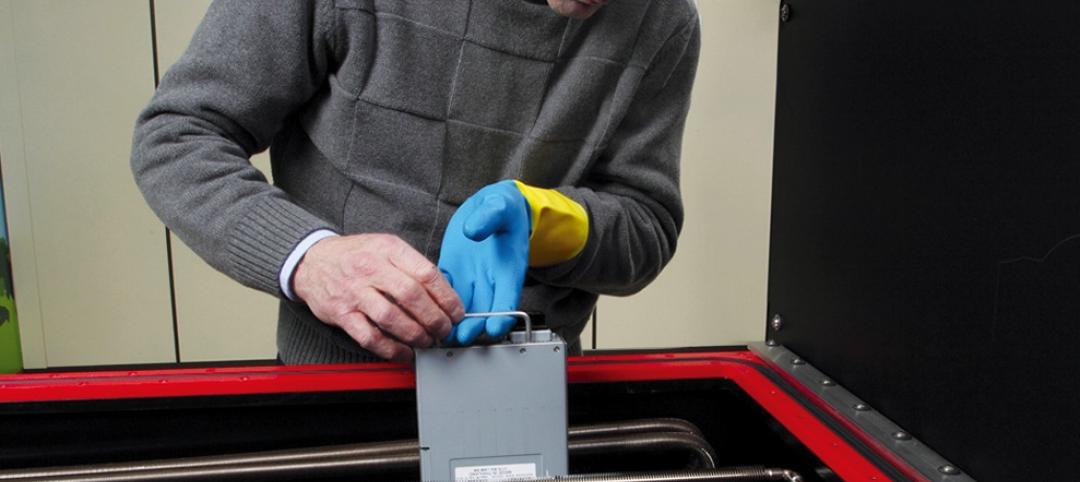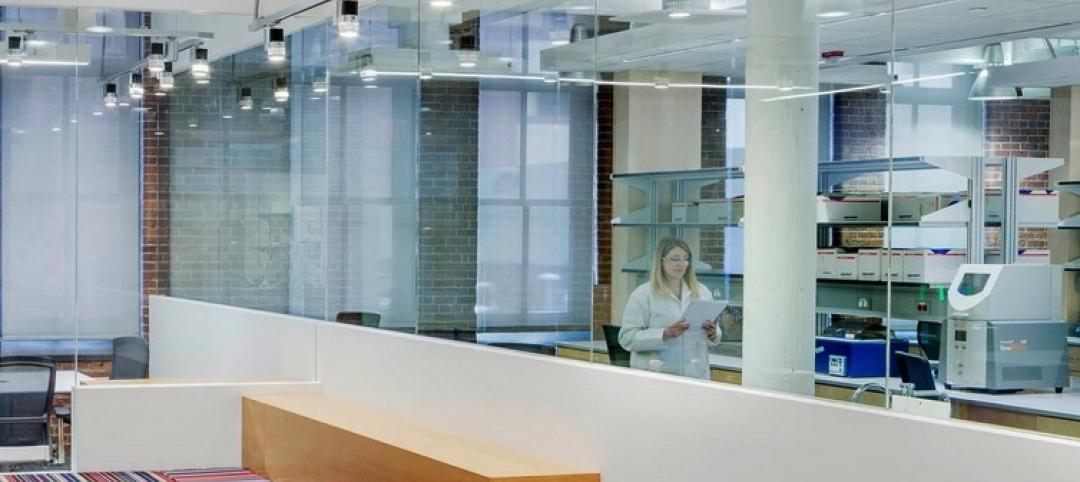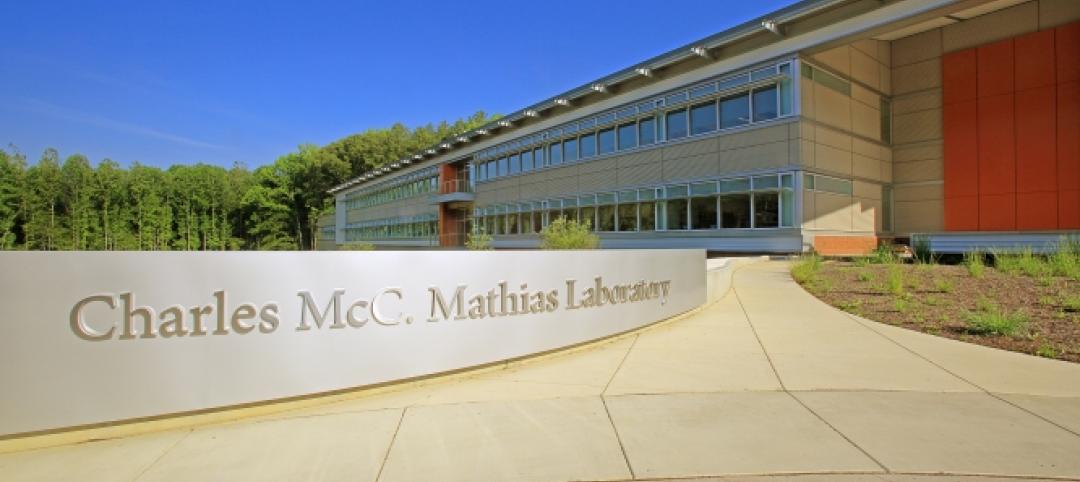When most people think of radiant heat or hydronic snowmelt, the usual applications are warm floors, heated sidewalks and snow-free driveways. Viega Radiant Design Services in Nashua, NH, has designed and quoted thousands of projects like those, but occasionally they receive requests for assistance with out-of-the-box projects.
The Big Bear Area Regional Wastewater Agency (BBARWA) in Big Bear, CA, contacted Viega Radiant Design Services with a project that needed an innovative solution. A byproduct of the water treatment process is sludge, composed of 25% solids and 75% water. Since the sludge must be hauled by truck to an off-site disposal area, BBARWA needed a way to reduce the water content and weight of the sludge, making it less expensive to haul. BBARWA tried several different methods to dry the sludge with only marginal success, so they decided to devise a new system that would be more effective, more efficient and would reduce the odor complaints.
Viega Radiant Design Services worked on the specifics of the slab heating system design, focusing on what would be required to generate enough heat from the slab to meet the sludge-drying objectives. Viega design engineers used finite element analysis (FEA) to determine the optimum tubing size, spacing and install-depth in the slab based on the water temperature supplied from the diesel generator’s exhaust. Due to the shape and size of the 315- by 60-foot heated slab, it was clear that this project was an excellent application for Viega’s revolutionary Viega Climate Mat® system.
Since the facility produces its own electricity using three natural gas generators, the water flowing through the slab would be heated with a heat exchanger in one of the generator’s exhaust, making it an efficient co-generation system. Within the first year alone, the new system saved approximately $200,000 in transportation and fuel costs.
Viega Climate Mat® system
The contractors were impressed with the speed and ease of installation of the Viega Climate Mat and appreciated the support provided by Viega throughout the entire process, from design to installation.
“Anything you said you could do, you did it,” said Plant Manager Fred Uhler. “They were topnotch guys from the sales staff, to the design support. They were excited about the project. It’s great to work with people like that.”
Once the covered drying bed building was completed, the system went into operation in June 2014. Within a few months, it became clear that this unique application of radiant heating was a resounding success. In 2015, Uhler reported that the system was performing beyond expectations and even better in the low-humidity winter months.
“This system is self-operational, and I’ve had zero maintenance issues with it from Viega’s side of things,” Uhler said. “It couldn’t be any better.”
Additionally, the project received the California Water Association Desert Mountain Award for Innovation.
While conventional radiant heating and snow melting projects are everyday business for the Viega team, projects like the Big Bear Area Regional Wastewater Agency covered drying bed are prime examples of how Viega can design and deliver innovative solutions that improve lives, reduce energy usage and help protect the environment.
For more information on Viega system solutions, visit Viega.us.
Viega
800.976.9819
insidesales@viega.us
www.viega.us
Related Stories
| Oct 16, 2014
Perkins+Will white paper examines alternatives to flame retardant building materials
The white paper includes a list of 193 flame retardants, including 29 discovered in building and household products, 50 found in the indoor environment, and 33 in human blood, milk, and tissues.
| Oct 15, 2014
Harvard launches ‘design-centric’ center for green buildings and cities
The impetus behind Harvard's Center for Green Buildings and Cities is what the design school’s dean, Mohsen Mostafavi, describes as a “rapidly urbanizing global economy,” in which cities are building new structures “on a massive scale.”
| Oct 14, 2014
Slash energy consumption in data centers with liquid-based ‘immersive-cooling’ technology
A new technology promises to push the limits of data center energy efficiency by using liquid instead of air to cool the servers.
| Oct 12, 2014
AIA 2030 commitment: Five years on, are we any closer to net-zero?
This year marks the fifth anniversary of the American Institute of Architects’ effort to have architecture firms voluntarily pledge net-zero energy design for all their buildings by 2030.
| Oct 9, 2014
Beyond the bench: Meet the modern laboratory facility
Like office workers escaping from the perceived confines of cubicles, today’s scientists have been freed from the trappings of the typical lab bench, writes Perkins+Will's Bill Harris.
| Oct 1, 2014
4 trends shaping the future of data centers
As a designer of mission critical facilities, I’ve learned that it’s really difficult to build data centers to keep pace with technology, yet that’s a reality we face along with our clients, writes Gensler's Jackson Metcalf.
| Sep 24, 2014
Architecture billings see continued strength, led by institutional sector
On the heels of recording its strongest pace of growth since 2007, there continues to be an increasing level of demand for design services signaled in the latest Architecture Billings Index.
| Sep 22, 2014
4 keys to effective post-occupancy evaluations
Perkins+Will's Janice Barnes covers the four steps that designers should take to create POEs that provide design direction and measure design effectiveness.
| Sep 22, 2014
Sound selections: 12 great choices for ceilings and acoustical walls
From metal mesh panels to concealed-suspension ceilings, here's our roundup of the latest acoustical ceiling and wall products.
| Sep 19, 2014
Smithsonian Institution opens LEED Platinum lab facility
The Charles McC. Mathias Laboratory will emit 37% less CO2 than a comparable lab that does not meet LEED-certification standards.
















